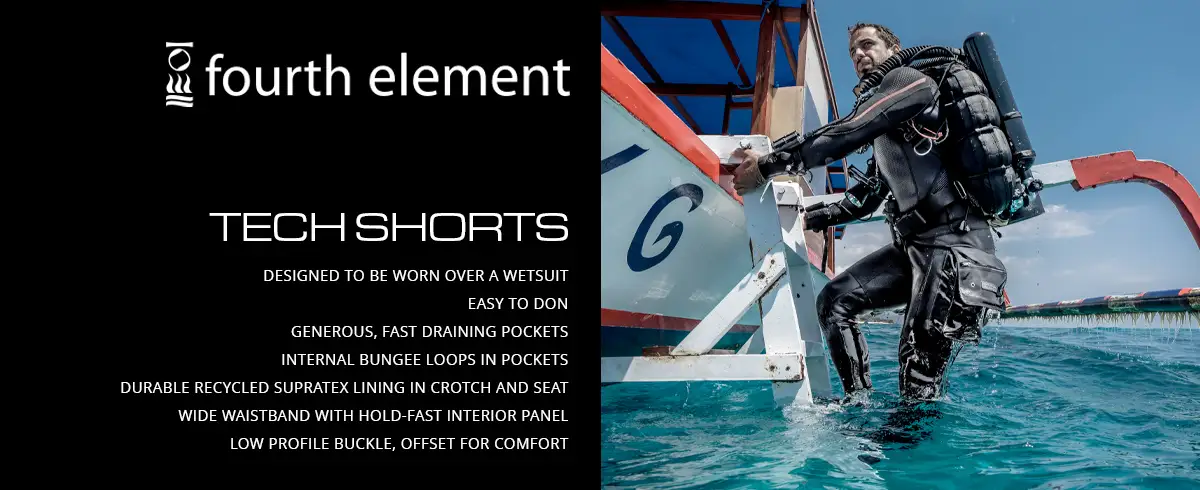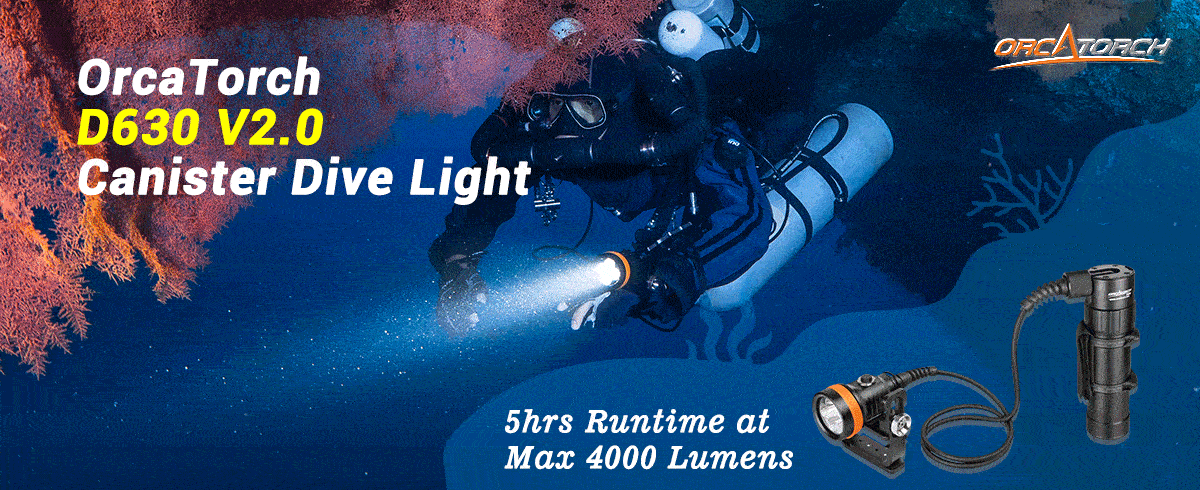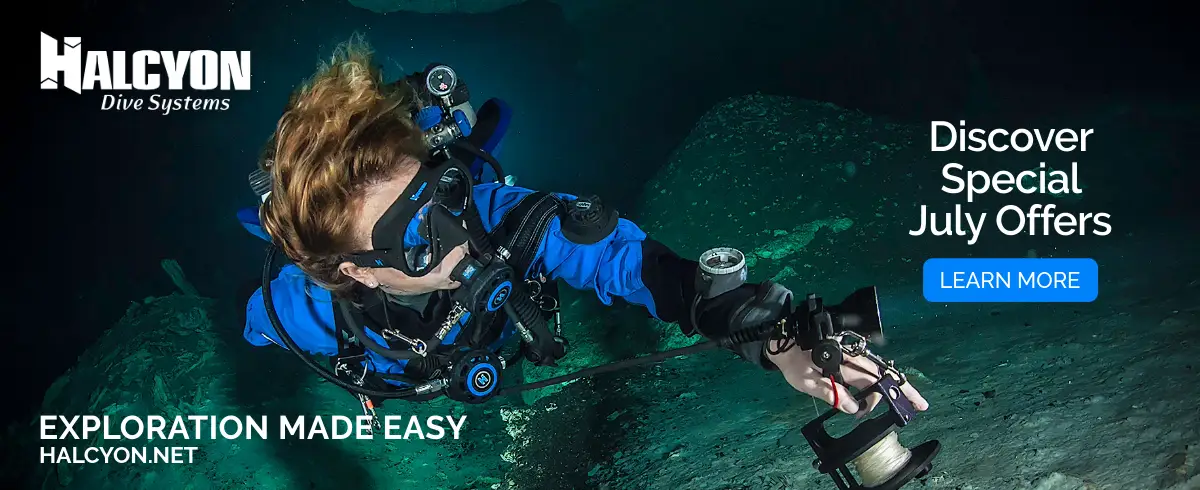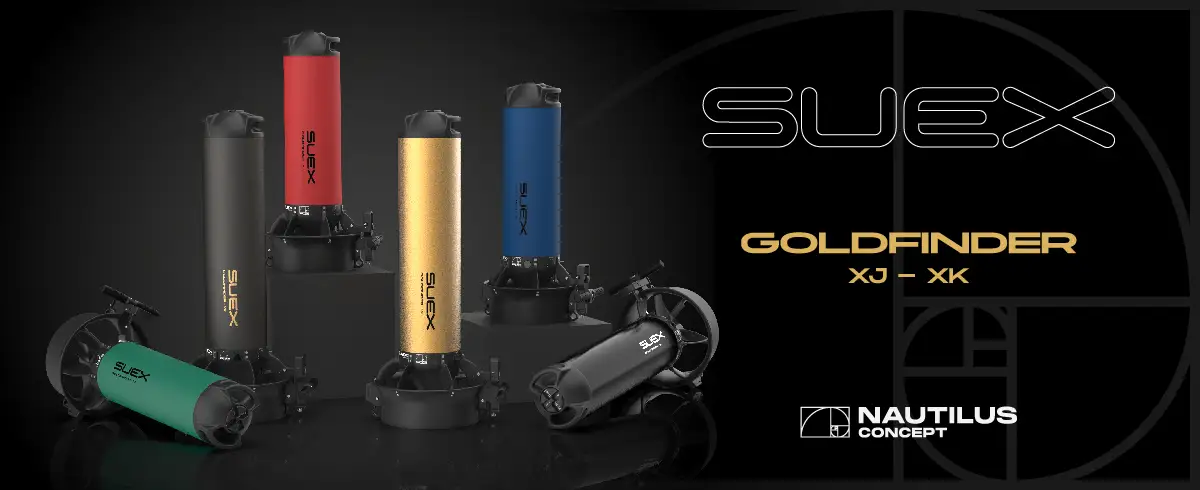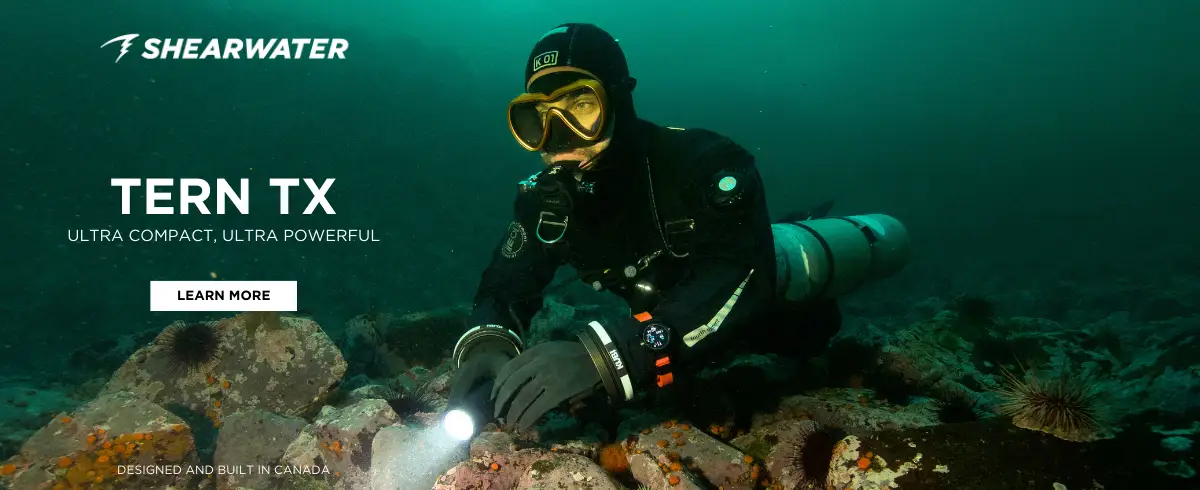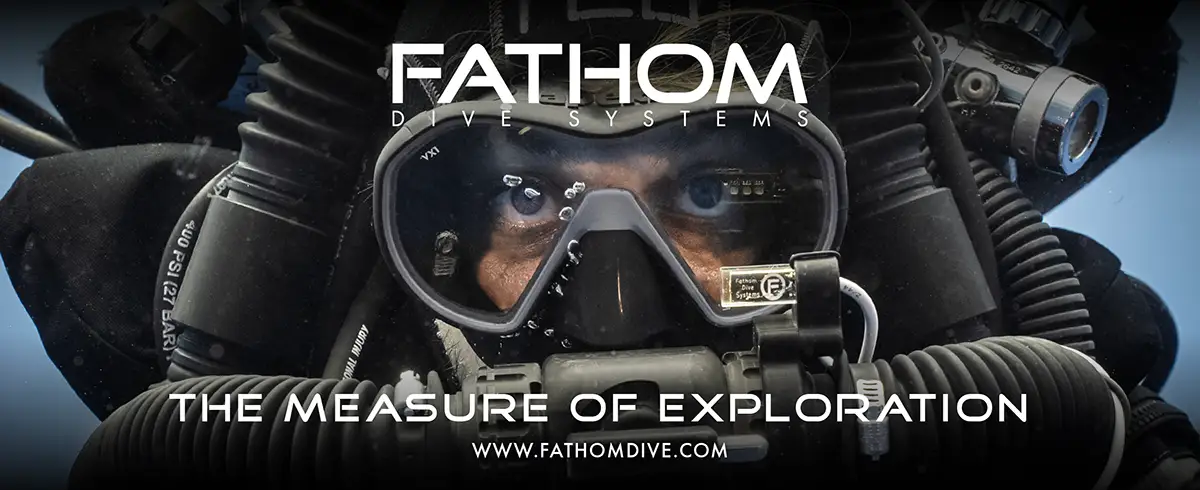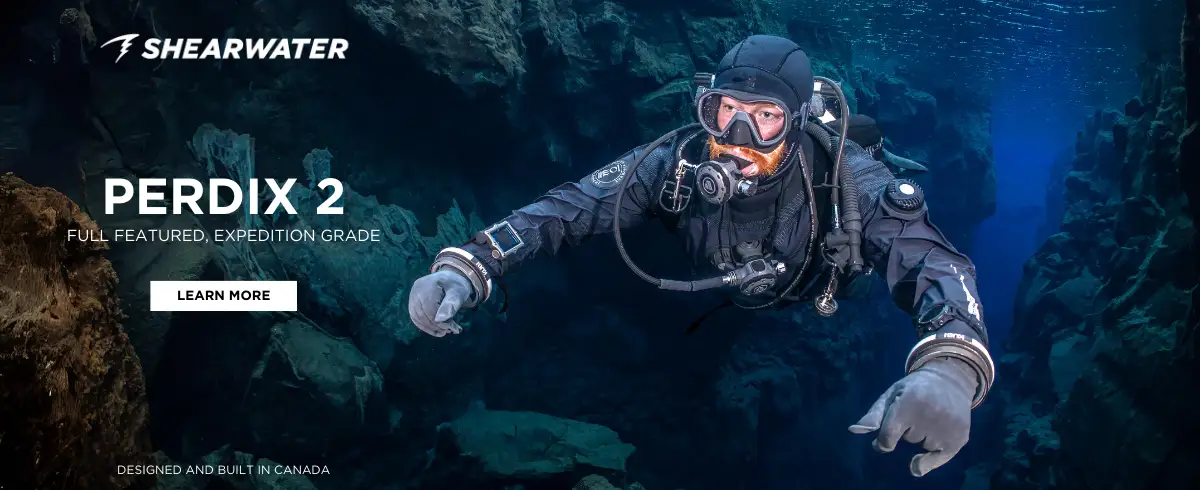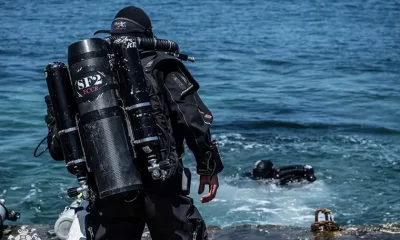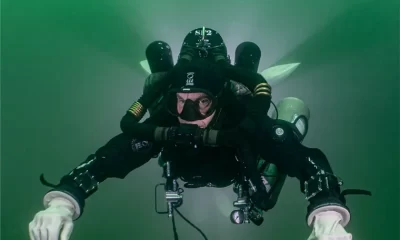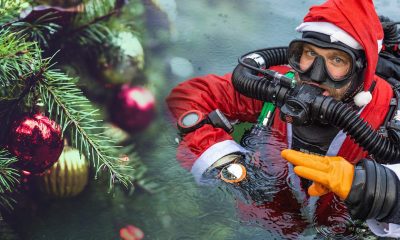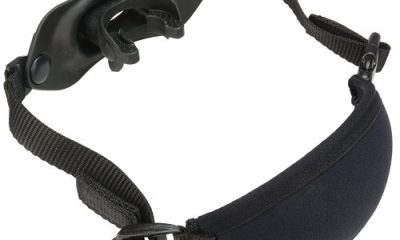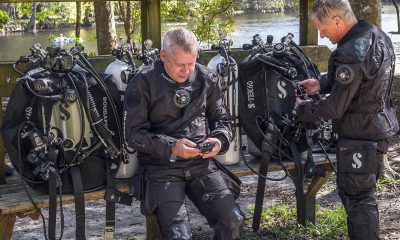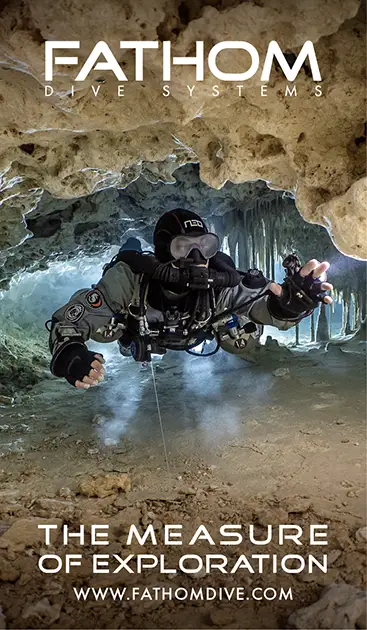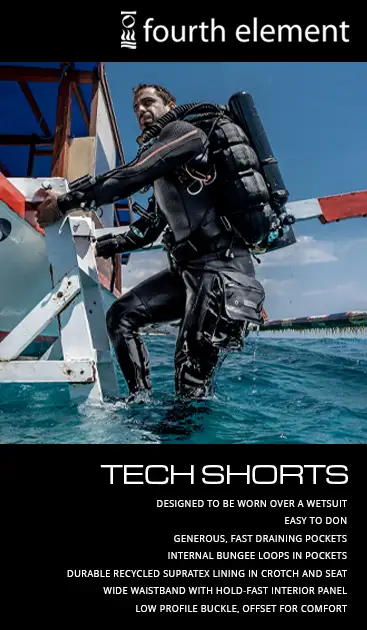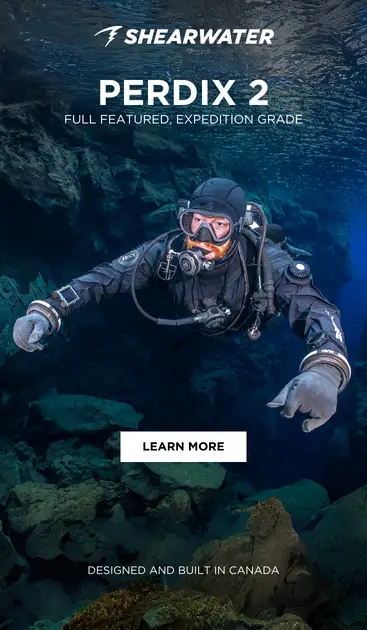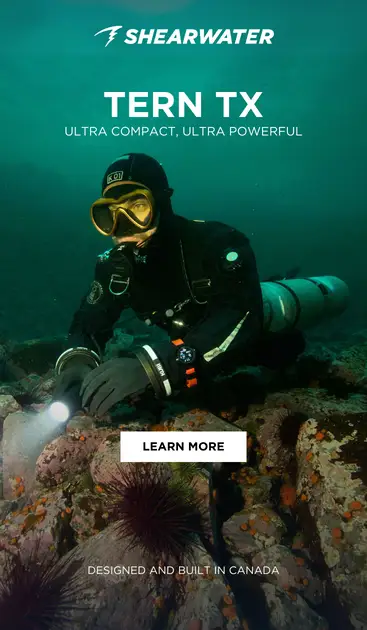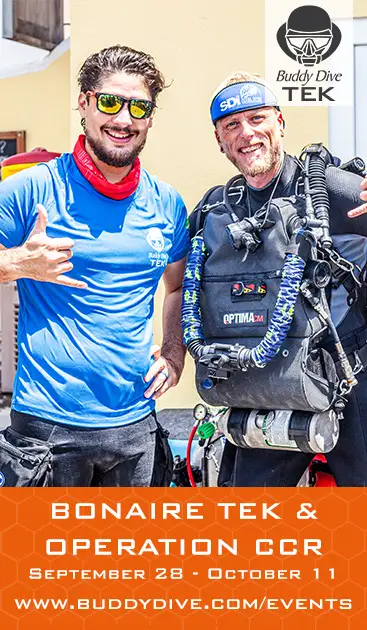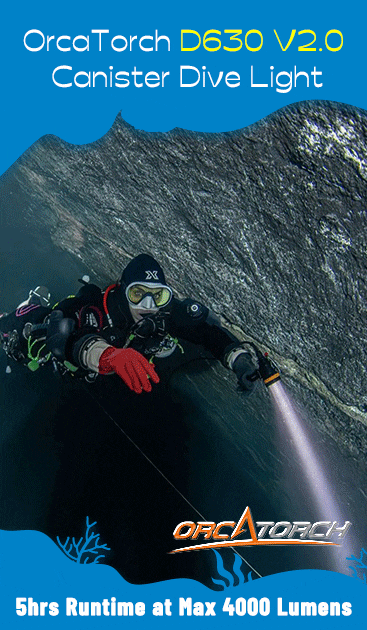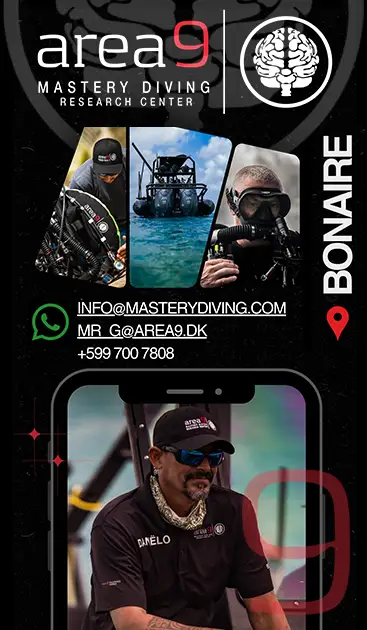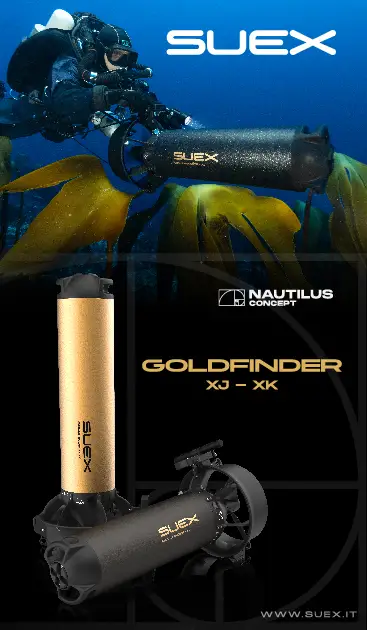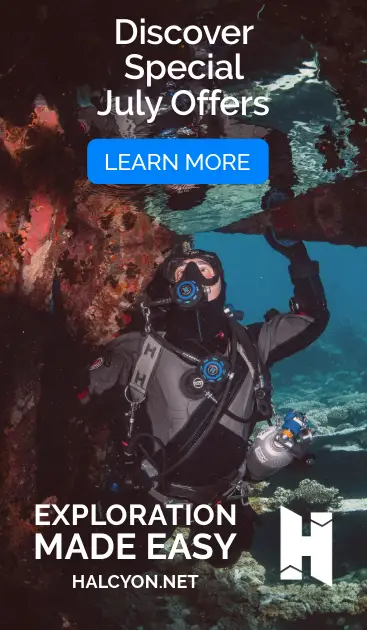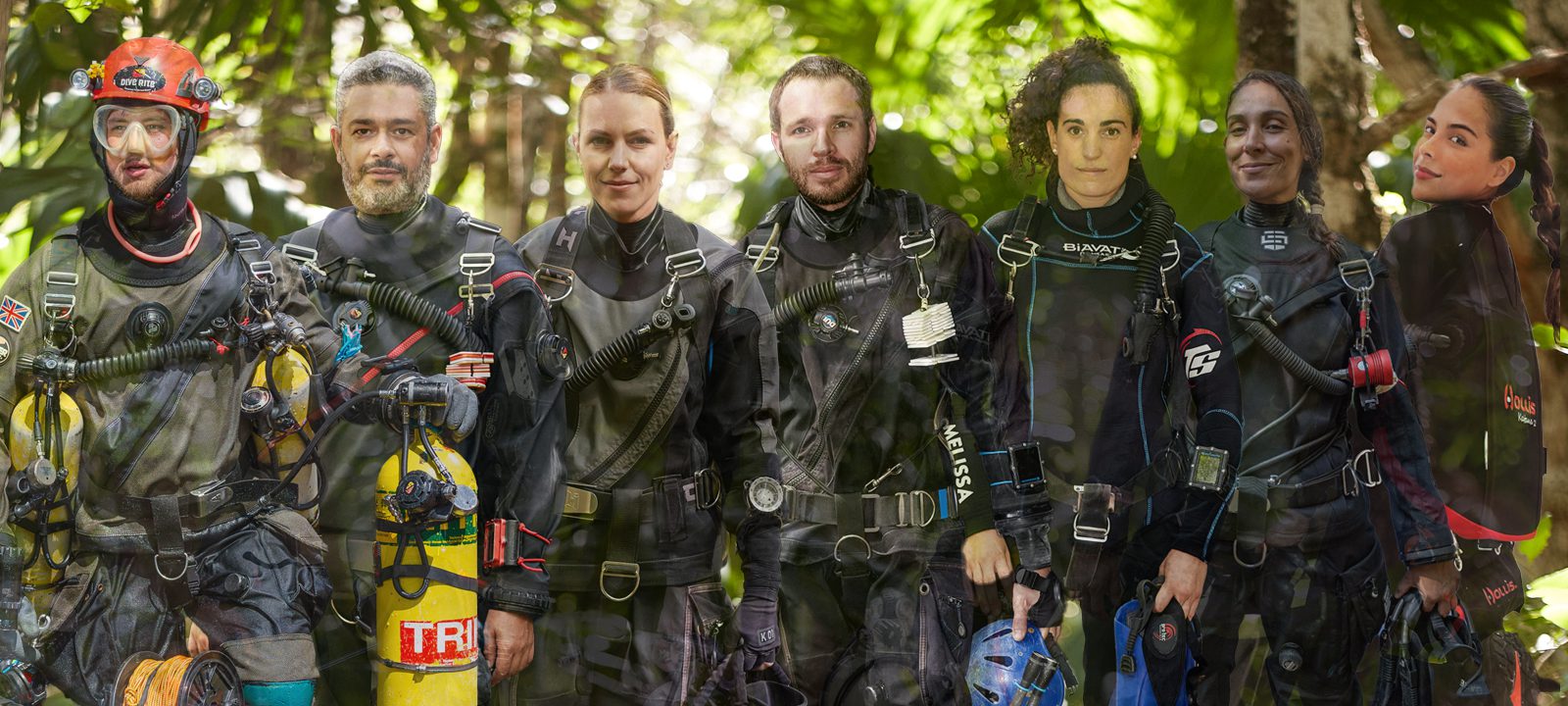
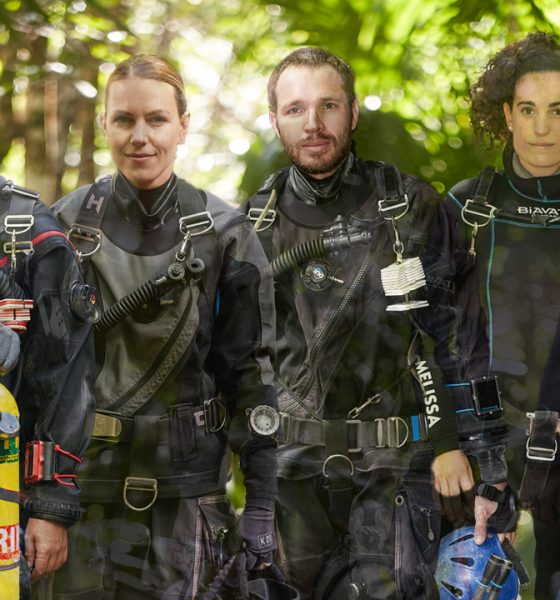
Equipment
Configure Me This: The Annotated Sidemounter
We make a deep dive into the world of sidemount diving, and examine seven leading sidemount systems with guest editors Steve Davis and Stratis Kas.
This feature was created by Steve Davis, Stratis Kas and Michael Menduno. Introduction by Michael Menduno. Special thanks to Michael Thomas and brand representatives who helped us. Cover collage by SJ Alice Bennett with photos by Jason Brown of Bardo and Stratis Kas. Images by Stratis Kas unless noted.
🎶 Pre-dive Clicklist: Dave Brubeck – Take Five 🎶
At last, I am pleased to present InDEPTH’s long awaited sidemount edition, which has been in the works for over a year. The purpose of the issue is to celebrate the art and practice, as well as the equipment and culture of sidemount diving. Call it, “The Joys of Sidemount.” But whether you already follow the Bogarthian way, or simply regard it all as “widemount,” I promise you there is something for you in this issue.
The seed of an idea for a sidemount issue grew out of two things: First was the popularity and interest of our NOV 2021 feature that celebrated our innate gear headedness: “Annotated Tekkie,” which examined the question of what and how much kit is required to safely explore our underwater world. Diving is a technology-dependent activity to be sure.
Second, was, that we’ve been seeing tremendous growth and interest in sidemount diving we’ve been seeing. Like technical diving itself, what started in the cave community with small groups of experienced divers experimenting with DIY sidemount configs some three plus decades ago, has now blossomed into a mainstream, commercial tech diving activity in both cave and open water. Sidemount diving has now even spilled over into recreational diving—the configurational equivalent of recreational nitrox in the era of tech mixed gas diving.
One of the important inflection points was bringing sidemount diving out of the caves where the configuration was born, into open water. Sidemount pioneer Jeff Loflin was one of the individuals instrumental in bringing sidemount to recreational divers and the open water tech community. He explained it this way to me in our interview, “We were taking sidemount from the dark, and bringing it into the light.”
“We were taking sidemount from the dark, and bringing it into the light.”—Jeff Loflin
Interestingly, over the last decade, sidemount rebreathers, used as both a primary or a bailout, or both, have also gained significant traction driven by innovative vendors like KISS/XDEEP, SF2, Divesoft, and others. In fact, seven vendors are currently producing sidemount rebreathers. Note that we have also seen an increase in the number of chest-mounted units that can be integrated with sidemount systems. However, we decided to focus on open circuit sidemount for the purpose of this issue, andl address sidemount rebreathers at a later date.
Today, virtually all of the tech diving agencies offer open sidemount courses, with the possible exception of NAUITEC. For example, these range from “Intro to Tech” level sidemount courses, at RAID, which are aimed at getting divers into sidemount at the beginning of their tech journey. At the other end of the spectrum, Global Underwater Explorers (GUE) only offers a cave sidemount course to those who have completed GUE’s advanced cave training (Cave 2) and have at least 50 post-class cave dives.
Similarly, the majority of the major recreational agencies offer a recreational sidemount class for open water divers, including CMAS, NAUI, PADI, RAID, SDI, and SSI. Collectively, these agencies are issuing thousands of certifications a year.
So how big is sidemount diving? Good question, right?!?
How big is tech diving?!? We don’t really know. As an industry we suffer from a severe case of data insufficiency syndrome (DIS). [We can combat this—see our survey below!] However, in speaking with insiders involved in the sidemount business, some rough comparisons emerged.
Sidemount diving is likely bigger than rebreather diving, which according to estimates presented at Rebreather Forum 4 in April, likely represents about 20-30,000 divers globally. This seems like a plausible estimate given the significant cost difference, familiarity with the equipment, and perhaps greater accessibility to training and equipment with open circuit sidemount compared to rebreathers.
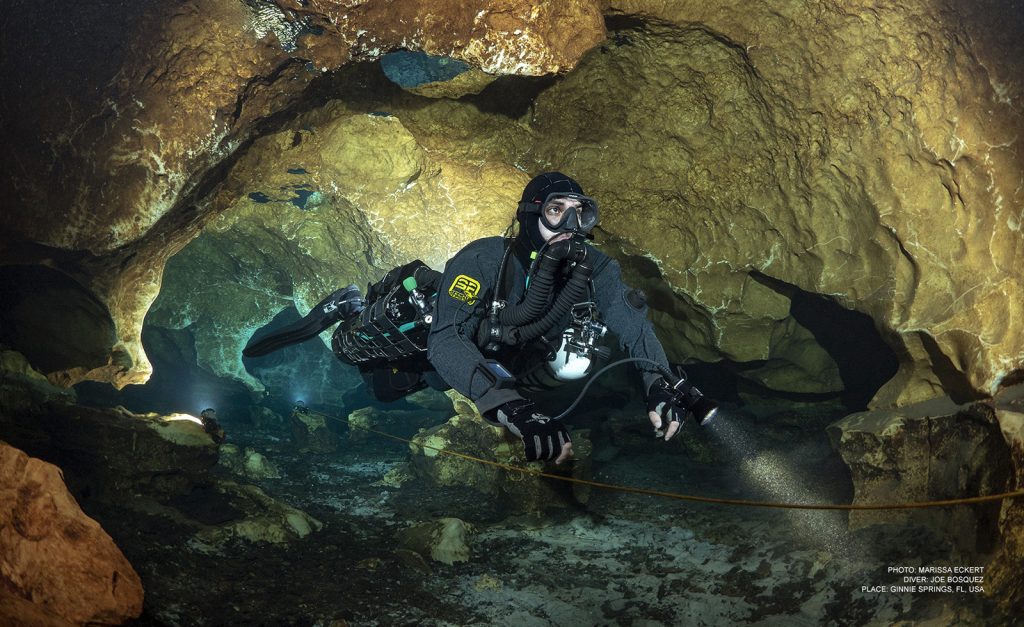
Another comparison: sidemount diving is likely bigger than cave diving! “Sidemount is not just used for cave diving anymore, but I would say that at least 80% of cave divers have at least tried, or have sidemount in their tool kit. Fifty percent or more dive it exclusively,” Dive Rite general manager Jared Hires explained. Add in tech sidemount diving in open water and wrecks, and the growing number recreational sidemount divers, and we are likely to arrive at what sidemount instructor Steve Davis of Sidemount Pros estimates as “Cave divers plus some.”
On the recreational side, a PADI exec told InDEPTH that PADI’s Sidemount Standard Specialty is now as popular as its Dry Suit Specialty, which is PADI’s third most popular Specialty Diver course, behind Enriched Air (Nitrox) Diver and Deep Diver, and ahead of Peak Performance Buoyancy. No drills on the knees, puhleez! I kid our friends at PADI.
Despite its growth and relative new-found prominence, sidemount still remains a kind of a best kept secret—the elephant in the restriction?—by which I mean many tekkies (including myself until recently) lack awareness and working knowledge of sidemount diving and may not have even tried it.
Not surprising divers being what they are, even among sidemount instructors and users, there’s a range of opinions on its use and application. On one hand, some view sidemount as a specific tool to be used exclusively for diminutive karst cave, on the other, many consider sidemount more of a platform choice. In fact, Davis, who you’ll hear more about in a minute, offered this question and assertion in our interview, Speaking Sidemount, and then went on and made his case:
“Is backmount the best tool for cave diving? No, it’s not. Sidemount is far and away the best tool for cave diving!”—Steve Davis
Certainly, many including GUE, would challenge this assertion. But on the other hand, who died and left legacy twinsets in charge? Jacques Cousteau? Is backmount intrinsically safer? Does it offer better performance? If so, please share the data with everyone. There is room for respectful debate. Of course, every platform has its strengths and weaknesses, and environmental conditions, and individual physical and preference differences play an important role in choosing the appropriate platform. However, because of the lack of awareness, knowledge, and direct experience in the overall diving community, the limitations of sidemount get exaggerated, and its application, perhaps, under appreciated.
“There’s absolutely nothing I can’t do in sidemount that you can do in doubles, and there are a shit ton of things that I can do in sidemount, that you can’t do in doubles.”—Edd Sorenson
As instructor trainer and cave rescuer Edd Sorenson explains in his Who’s Who interview, “People used to tell me all the time all the things I couldn’t do in sidemount, and still do. ‘You can’t dive off a boat, you can’t do this, you can’t do that, you can’t scooter, you can’t double stage, you can’t quad.’ I would tell everybody the same thing. There’s absolutely nothing I can’t do in sidemount that you can do in doubles, and there are a shit ton of things that I can do in sidemount, that you can’t do in doubles.” Note in his interview Sorenson recounts taking GUE founder and president Jarrod Jablonski for his first sidemount dive. A trust me dive with Edd? Trust me, you don’t want to miss it.
Not surprising, it seems that many, or most of the dedicated sidemount divers we spoke to for this issue (See: The Who’s Who of Sidemount Diving) offered some version of the following, and or, would likely agree with this meme:
Once You Go Side, You’ll Always Dive Wide.
Ha! I kid our backmount sisters and brothers. None the less, it’s clear that sidemount is here to stay!
Now I’m not a sidemount diver, yet (it’s on my list), and only one member of InDEPTH’s team dives sidemount, in caves. So, to help us with the issue, we enlisted the help of two sidemount experts to serve as guest editors. We reached out to New Zealand-based sidemount instructor, ambassador, and host of the “Speaking Sidemount” podcast Steve Davis, principal of Sidemount Pros. We also enlisted the help of Greek photographer/filmmaker, author, long time InDEPTH contributor, and cave and sidemount instructor, the inimitable Mr. Stratis Kas. Both of them helped with the selection people and sidemount systems we planned to highlight, and authored content for the issue.
Beginning with this lead story, “Configure Me This,” we explore seven recognized and storied sidemount systems, all of them a little different. Who knew there were that many? In contrast, it’s fair to say, backmount configs have generally become fairly standardized in the global tech community. Please note, that the majority of models are shown wearing their personalized branded gear not necessarily stock products.
Next, we offer the perspectives and stories of 34 leaders in the field, in a piece titled, “The Who’s Who of Sidemount Diving.” We also dive into the philosophy, culture, and practice of sidemount diving in “Speaking Sidemount” and “The What, Which and Why of Sidemount Diving’‘ with our guest editors.
In addition, we offer A Brief History Sidemount Diving with Lamar Hires, Bill Renaker and Patrick Widmann, and specifically the evolution of cold water vs warm water sidemount titled, “The Evolution of Sidemount System Design: Two Distinct Paths Shaped by Florida and Mexico,” by sidemount instructor and author Andy Davis. Finally, the issue wouldn’t be complete with a bit of DIY sidemount heresy from long time scuba engineer and troublemaker, Dave Mclean, call it Sidemount Heresy! Trust me, you’ll be better for the exposure!
Here then is InDEPTH’s celebration of sidemount diving and culture. We want to thank our forward thinking sponsors: DAN Europe, Dive Rite, Divesoft, Fourth Element, Halcyon, Shearwater and XDEEP for making this issue possible. We also want to thank Nicole Alarid, Orie Braun, Jared Hires, Nick Hollis, Michael Thomas, and Patrick Widmann, who helped us sort out sidemount configurations and Elena Vivaldo for researching recreational sidemount. And of course, we want to thank our models: Robert Thomas (CDG), Ricardo Castillo (Dive Rite), Emöke Wagner (Halcyon), Melodie Trevino (Hollis), Marcelin Nebenhaus (Razor), Mélissa Bezaz (Toddy) and Tamara Adame (XDEEP). Looking good divers! We do plan to create a free downloadable poster from this issue. Watch this space!
Please note, we realize this issue primarily represents the views of advocates who are making a case for sidemount. We haven’t focused on stories of divers who have had bad experiences with sidemount or spent much ink delving into its downsides, to the extent that these exist. Consequently, I invite readers who feel so moved to submit their views and or experience, call it, “The Trouble With Sidemount … ” or “Never Do This is Sidemount..” . I’m joking about the titles but serious otherwise. We will happily run thoughtful stories. Let’s get a conversation going.
Finally, we would like to acknowledge that as human diving journalists and artists on deadline, we have likely made errors and omissions, and/or failed to identify important items that our geeky readers will no doubt discover. Our apologies in advance. If you do find any errors, omissions, or needed tweaks, please let us know, and we will endeavor make corrections. Thank you.—Michael Menduno/M2
Please take a minute and complete our new: Sidemount Diving Survey. We will report the results in a coming issue.

Use the following navigation links to dive into your favorite configurations
Halcyon ZERO GRAVITY™ Sidemount System
Cave Diving Group (CDG) Sidemount System
The CDG sidemount system has evolved many times since the 1960s but it’s still a lightweight system for diving sump’s generally found after significant dry caving. The important thing to remember is that it is not just one system. Each diver will have a slightly differently made harness but basically doing the same thing.
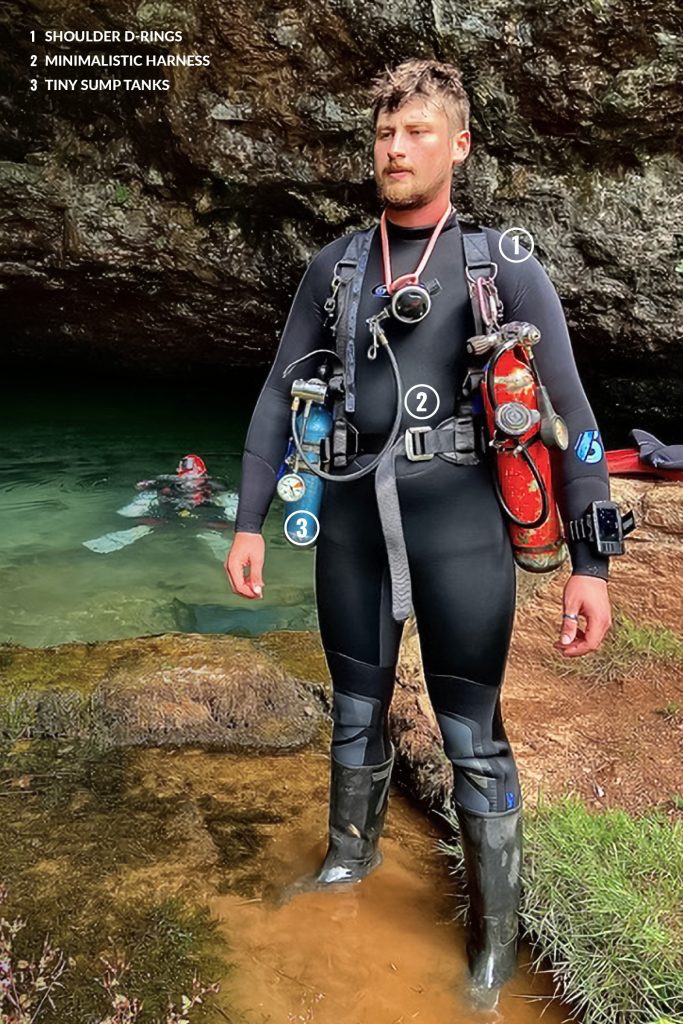
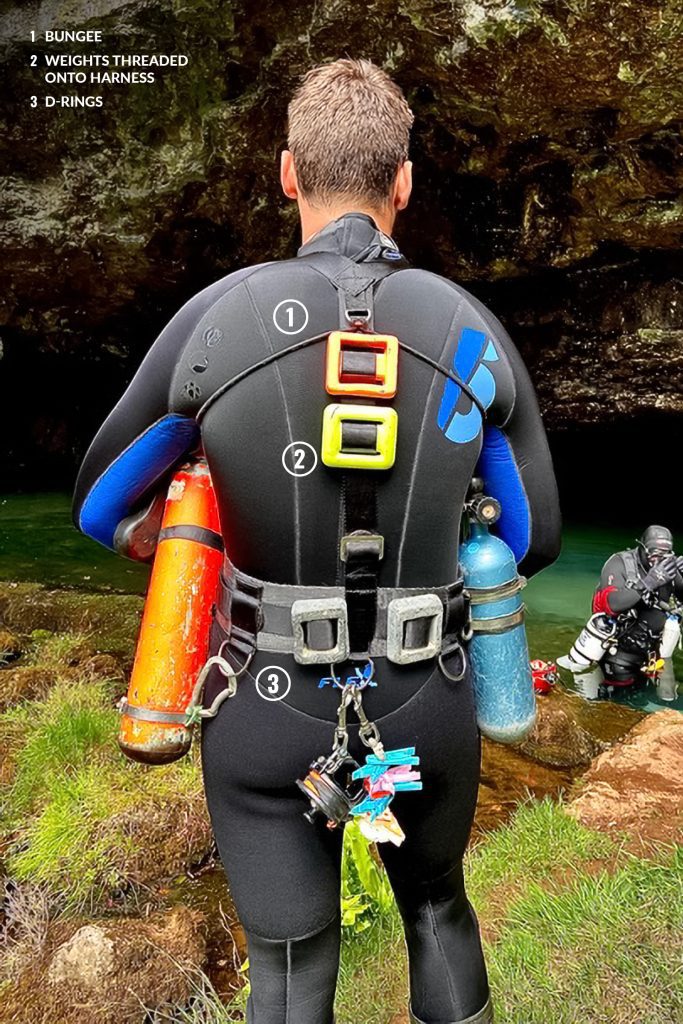
Weight System
- Traditionally the weights go around the waist on a CDG harness, a more modern version of the CDG harness such as the RMTD harness (in the photo) weights can be fitted down the spine.
Harness
- The harness itself is a simple design with minimal adjustment but designed to walk or cave while wearing wetsuits and small cylinders. It can also be used with larger cylinders. Steel cylinders are the norm for uk cave diving. The harness has fixed D rings and no sliding D rings for use with Aluminium cylinders.
- Some CDG harnesses are adapted to use with vertical access equipment (SRT) so the caver/diver can descend the vertical dry cave then use the same harness to dive.
BCD/Wing
- The CDG harness has no wing, because generally buoyancy is not required when using wetsuits and small cylinders in sumps. It was common for divers in British Sumps when using drysuits to use the suit for buoyancy and use no wing. In more recent years a small wrap around wing such as the X deep classic or home made equivalent can be easily added if the diver is using bigger cylinders or carrying equipment through the sump to further dry cave exploration and requires buoyancy.
Commentary
The CDG harness is designed to take weight loading on the divers’ shoulders and hips. Karabiners are generally used for attaching cylinders to the harness. A bolt snap is not a weight loading piece of equipment and should not be used to lower equipment down and then up vertical sections of dry cave, karabiners also work when covered in mud or grit! It’s not a harness that will get cylinders in that perfect internet trim but it is a harness designed to explore flooded cave sections found a long way underground. All modern harnesses took the sidemount system from the original Cave Diving Group harness design.
Dive Rite Nomad Ray
The Nomad Ray is the latest sidemount system offering from Dive Rite. It includes a number of notable upgrades to the Nomad range and was designed to be easily adjustable, suitable for a range of body types and diving applications, including the use of both steel and aluminum cylinders.


Weight System
- The Nomad Ray has three padded, internal pockets each of which can hold up to 5 lbs/2.3 kg of either hard or soft weight.
- The weight pockets are located on the back of the wing and accessed via a zipper, making for easy weight adjustments while fitted.

Harness
- The harness consists of independent shoulder, waist/hip, and crotch straps each of which are adjustable to fit the system to a variety of diver body types.
- The harness incorporates custom hardware including two fixed angled D-rings on the shoulders, two fixed angled D-rings on the waist/hip strap plus, two sliding waist D-rings, two chest bungee-retainer slides, two rear drop D-rings for primary tank attachment, and one “dog-bone” crotch strap double D-ring for accessories, plus a DPV D-ring.
- The harness is in Y configuration and attaches to the BCD/wing via woven D-rings at the top and through woven loops and screwed connection at the bottom.
- For the fashion conscious, the wing comes in six colors.
BCD/Wing
- The BCD wing is shaped to provide lift at the lower lumbar region. It comprises a Denier outer shell with an inner bladder and has 42 lbs/19 kg of lift.
- The upper backside panel is abrasion-resistant for restrictions.
- It incorporates a standard inflator that can be routed from the left (standard) or right side.
- The BCD includes two pull dumps which are also OPVs. One is located at the inside top center of the wing with a left shoulder pull dump activated via a sheathed cord. The second is located at the bottom left of the wing. The locations of the dumps may require an alteration of diver position to dump all of the gas from the wing e.g. roll to the right to dump from the left side lower dump. Note this would also align with dumping gas from a drysuit.
- “Belly-band” bungees locate and wrap the outer wing extremities to the diver’s body. The bungee includes a bungee hook attachment and two wing grommets for easy and quick adjustments by simply moving an overhand knot on the bungee.
Commentary
The Nomad Ray is a significant upgrade for Dive Rite and evolving to meet the needs of modern sidemount divers. In particular, the easy-access weight system, shoulder dump, easy-to-adjust “belly-bungee,” plus the method of attaching the harness and the independent crotch strap to the wing, are notable improvements.
Halcyon ZERO GRAVITY™ Sidemount System
Halcyon’s Zero Gravity sidemount system was a collaborative creation with our Mexico distributor, Zero Gravity. The Zero Gravity system puts the buoyancy over the hips and along the sides of the rib cage where buoyancy is desired. Extremely streamlined, the air chamber positioning gives it a flat profile on the back of the diver. The Zero Gravity is suited for double aluminum 80’s and a wetsuit or small steel cylinders used with dry suits and heavier undergarments. The Zero Gravity features an adjustable harness, and an optional weight pouch that will hold up to 15 lbs./6.8 kg, and optional inflator placements on the right or left side.
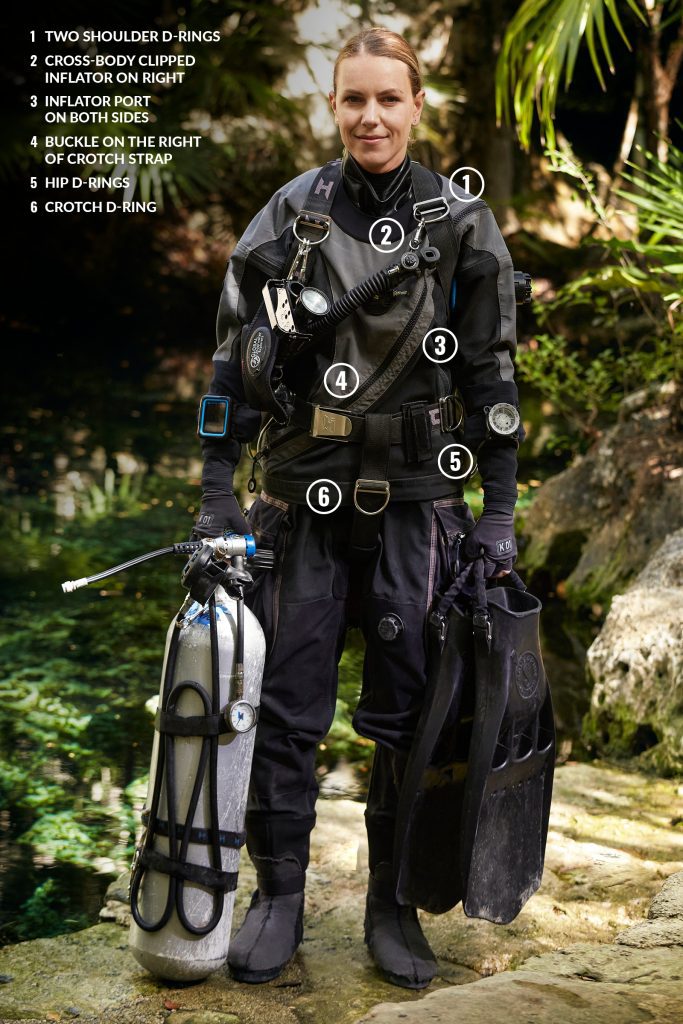

Weight System
- The added weight attachment is designed and built to lay on the diver’s back in line with the spine. Like our traditional weight options, this allows the diver to keep perfect trim while adding weight. With the three-pocket design, you can add up to 5 lbs/2.3 kg in each pocket as needed and disperse them at different placements for that balanced distribution. The velcro additions allow for secure storage and keep even soft lead pouches from moving around while diving.
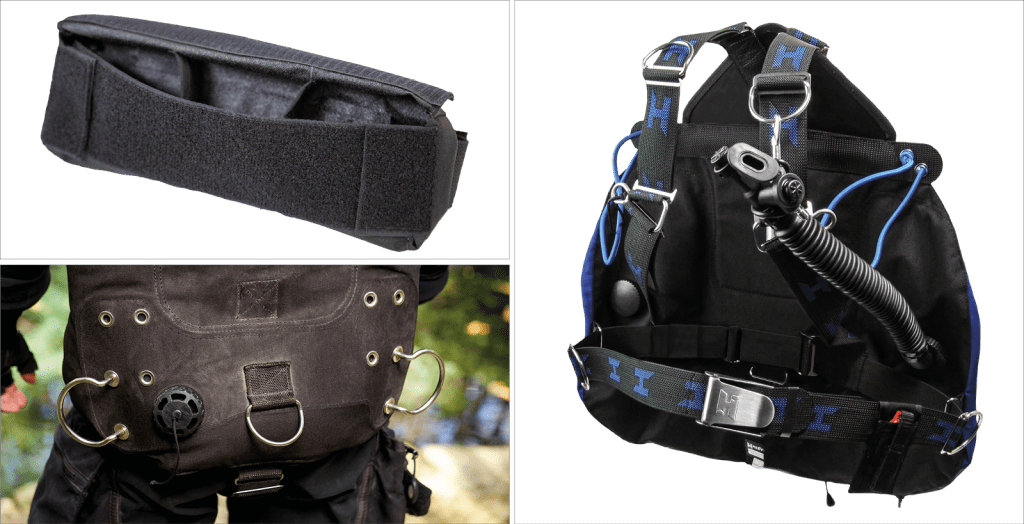
Harness
- A harness system with multiple point adjustment is styled after the standard backplate harness, with the lower portion of the strap going behind the diver, allowing for greater freedom of movement and comfort, especially for the women in the diving. This harness system is easily changeable when needed over time, allowing the diver to modify the colors of the webbing if desired for personal customization.
- The newly redesigned door handles provide divers with several options when choosing the right cylinders and placement. With the added grommets, the diver can adjust the door handles into three different locations on the back, as is, higher, or in towards the diver’s back. This placement is essential when setting up the cylinders. The added feature of using curved door handles over traditional square door handles is that when the cylinders are clipped to the system, the bolt snaps do not snag or get hung up in a corner. This keeps the cylinders and the bolt snaps in a free space for easy reaching, clipping, and removing as needed throughout the dive.
- The adjustable bungees make it easy to use with different regulator configurations, whether the regulator is pointed up or down. The waist strap D-rings on the right and left hip allow for AL80’s to be clipped forward as they become buoyant. We achieve this with a non-fixed D-ring by adding an O-ring to the design. This allows the D-ring to be in an upright position for easy finding and clipping while at the same time allowing the D-ring to move freely if in a tight passage or corridor without becoming a snag point.
- The uniquely positioned cylinder bungee runs across the back of the system and diver giving you more stretch when wrapping your valves while keeping your cylinders high, tight, and secure. This placement of the bungee allows the diver to adjust the bungee length very easily, whether in training or for the more experienced sidemount divers. This bungee is very easy to change out by the user if they prefer a lighter or heavier bungee without compromising the design of the system.
BCD/Wing
- The streamlined design with a unique U-shaped bladder provides an almost free and clean back that reduces your profile and drag. The U-shaped bladder allows stable, uniform lifting along each side of the diver where they need it and across the rear of the diver so they have adequate lifting potential without sacrificing profile and trim. This keeps the profile of the diver very low enabling them to access smaller passages without rubbing the bladder. Top to bottom while trim position does not change even as the bladder is fully inflated. This was a key component in the design for low-profile passages and doorways.
Commentary
“As an avid sidemount diver and explorer in North Florida, I have used a variety of side mount systems on the market. It wasn’t until I dived the Zero Gravity system, that I was able to pass through several low passage tunnels without feeling the top of the system scraping along the way. The low profile of the system, even when fully inflated, allowed me as the diver, to keep a low profile in the cave system. This truly became a game changer when it came to exploring new tunnels.” – Orie Braun, Halcyon Sales Manager
Hollis Katana 2
The Katana 2 is the latest sidemount offering from Hollis and brings them into line with the other top contenders in the sidemount space.
Designed with support from cave explorer Edd Sorenson, the Katana 2 incorporates a number of innovative features including a “Quick-Fit” system for easy adjustment, the ability to configure as a H or Y style harness, out of the box support for the KISS Sidewinder, and a BCD top dump valve with shoulder pull.
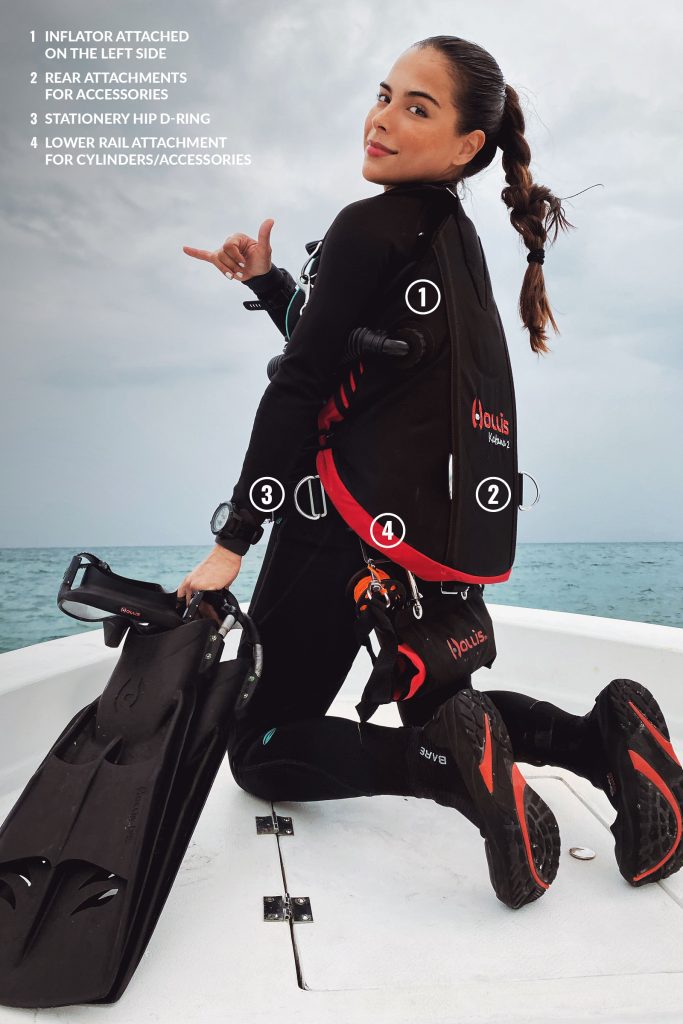
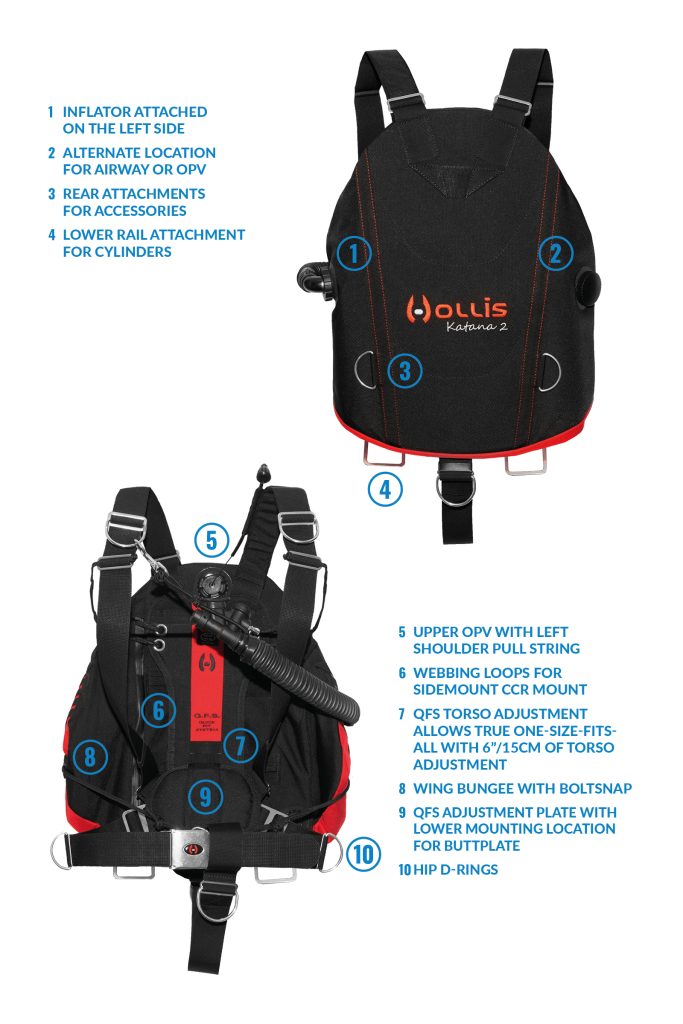
Weight System
- The Katana 2 weight system features a drop-in Velcro pouch design with 4 x 5 lbs/2.3 kg pockets along the spine. The spine positioning of the weight system can assist with trim adjustment as required.
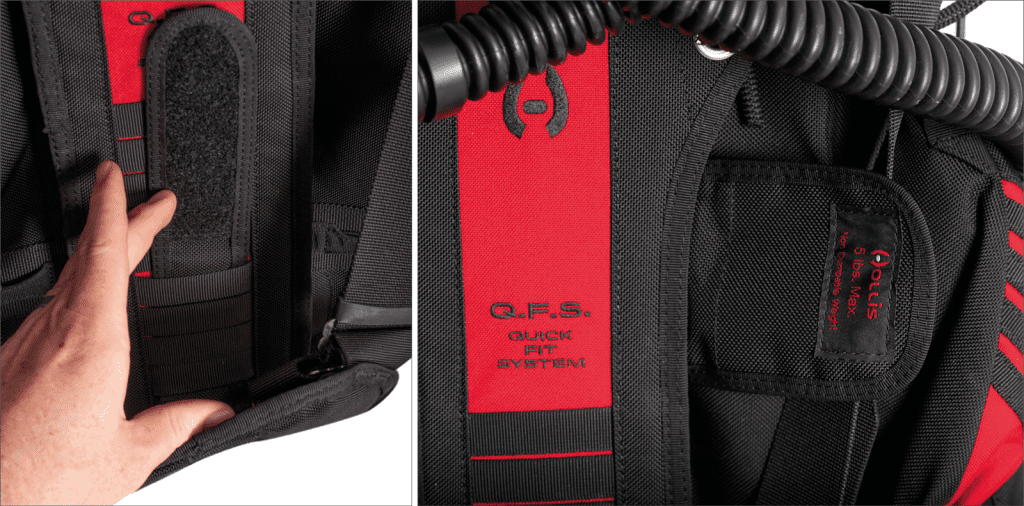
Harness
- The Katana 2 sidemount harness features an innovative “QFS” Quick Fit System which allows users to easily tailor the one-size-fits-all harness to their specific size.
- The design also allows for either an “H” or “Y” style harness configuration. H-style is most commonly used when donning the system in a drysuit and can be less restrictive, while the Y-style is most similar to a backplate configuration and provides a snug but comfortable fit when properly sized. Both are suitable for various types of diving and user preferences.
- The Katana 2 is the first harness with attachment loops built-in to support the popular KISS Sidewinder CCR and similar units now in the marketplace.
BCD/Wing
- The wing lift capacity is 40 lbs/18 kg and features a tapered design to keep the diver profile as low as possible, without the “turtle shell effect” which causes drag.
- The top of the wing is two-
Commentary
“The coolest thing about the Katana 2 is the way it ships out of the box. You can customize it to your preference thanks to the innovative harness and adaptable wing design. Technical divers love to customize their gear … and they can make all of the adjustments themselves without permanent modifications on this rig.” – Hollis Brand Manager, Nick Hollis
Razor
The Razor Harness embodies simplicity and elegance with just two continuous pieces of webbing and one closure point. Its design is minimalistic, yet strong, rugged, and reliable. The harness offers a comfortable and custom fit for divers of all sizes, thanks to its quick and easy setup and adjustable, standardized hardware.
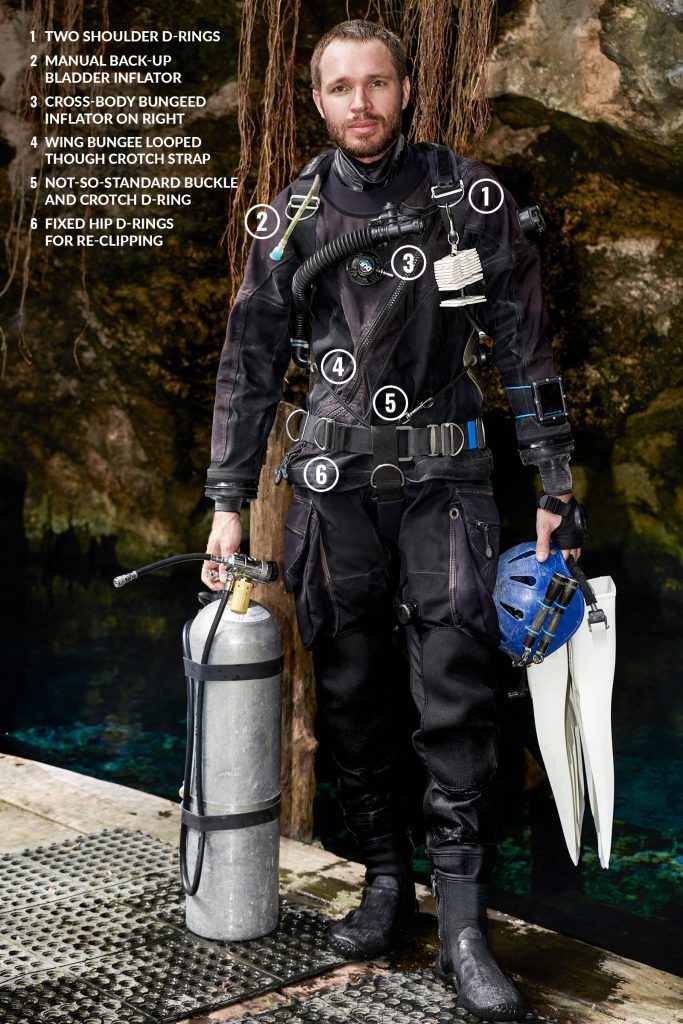
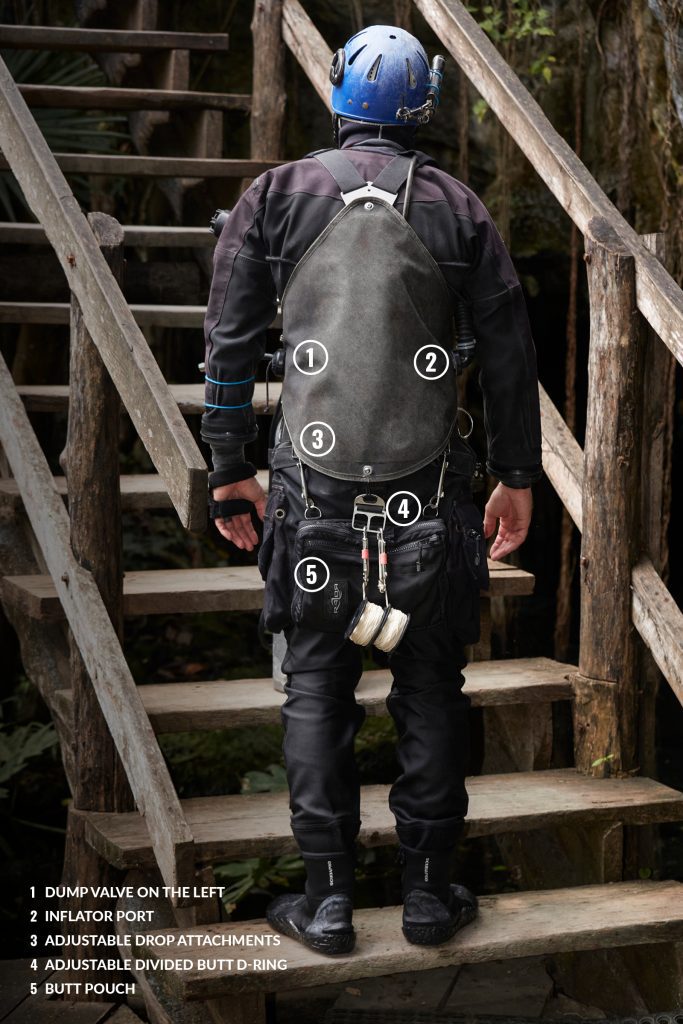
Weight System
- The Razor Harness allows precise placement of weights for optimizing trim. Additional weights can be easily added to the Razor Pocket Weight, the Waist Strap, or both if more than 13 lbs/6 kg are needed.
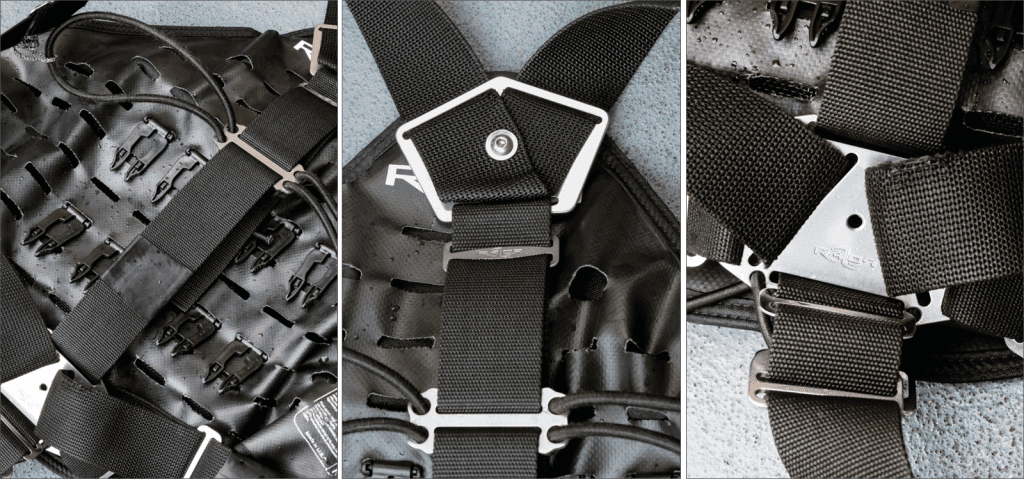
Harness
- All attachment points, such as D Rings, on the Razor Harness can be swiftly and easily adjusted for personalized equipment placement. Each Shoulder Strap/Waist Strap can be adjusted at the Mini Back Plate.
- The length of the Lumbar/Crotch Strap can be adjusted at the Delta Shoulder Plate. The height of the Waist/Hip strap can be adjusted at the Mini Back Plate. Extra attachment points can be added if necessary.
BCD/Wing
- The BCD/wing is simple to use and attach or detach from the Razor Harness, secured by just two button head bolts. The mounting position can be easily adjusted to accommodate different-sized divers.
- The wing is exceptionally durable, constructed with three layers: two outer layers of abrasion-resistant 1000 denier ballistic nylon with a layer of heavy gauge polyurethane in between. The wing is ultrasonically welded, and all edges are finished with edging tape. All attachment points feature reinforced grommets for added strength.
- The primary wing provides 45 lbs/20 kg of lift and is equipped with a low-profile, heavy-duty manual dump/OPV valve from DSS, along with a standard power inflator. This allows inflation of the primary wing either using the power inflator or orally.
- The fittings for the dump valve and corrugated hose/power inflator are interchangeable, enabling divers to use them on either the left or right side of the wing according to their preference.
- The Redundant wing also provides 45 lbs/20 kg of lift and is fitted with a very low-profile “coin” dump/OPV valve and oral inflator.

Commentary
The Razor Harness and BCD/Wing system offers divers a sleek and minimalist design without compromising on functionality or durability. Its simple yet robust construction provides a comfortable and secure fit for divers of all sizes. The weight system allows for precise weight distribution to optimize trim, while the adjustable attachment points offer personalized equipment placement. The BCD/wing is easy to attach and remove, and its rugged three-layer construction ensures long-lasting performance. With interchangeable fittings and low-profile valves, the system offers versatility and convenience. Overall, the Razor system combines simplicity, reliability, and versatility, making it an excellent choice for divers seeking a streamlined and efficient diving experience.
Toddy Style
The Toddy Style Sidemount System offers divers a unique and innovative approach to sidemount diving. Its “sandwich” style weight system, adjustable harness, and thoughtful design elements enhance comfort, balance, and ease of use. With the ability to customize weight distribution, easily adjust harness straps, and utilize specialized clips, this system provides divers with a streamlined and efficient sidemount experience. The Toddy Style Sidemount System is a reliable choice for divers seeking enhanced maneuverability and minimal drag during their underwater explorations.
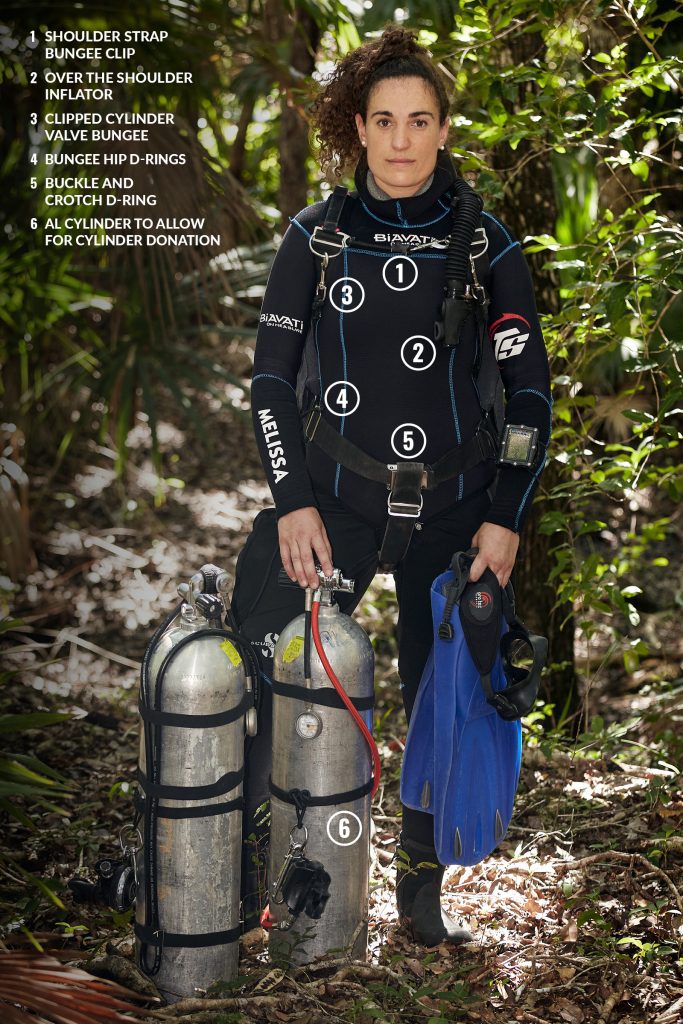
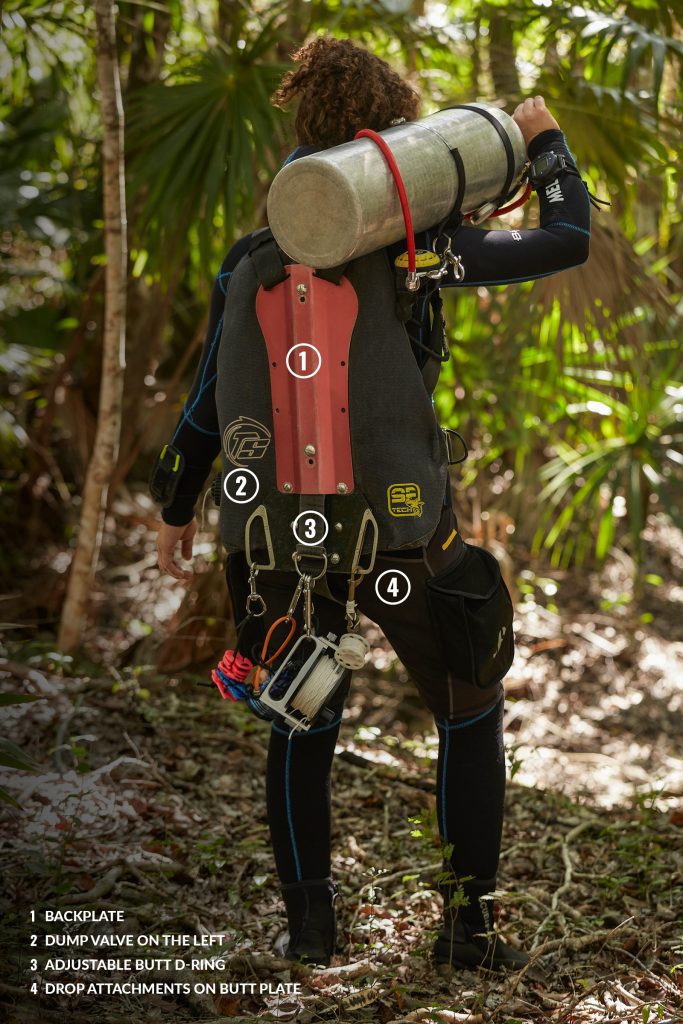
Weight System
- The “sandwich” style system consists of a thin backplate that holds the wing together while protecting it from accidental restriction impact. A backmount-style backplate finishes the sandwich-style system. These backplates also act as a weight system. If the user desires, additional backplates can be added, fitting perfectly on top of each other and distributing the weight evenly over the diver’s back, rather than concentrating it on the spine. This allows for better balance and reduces the “rotation” effect.
- For divers who want to travel with the system, there is a more traditional sidemount weight system. It consists of a weight holder that can be added to the backplate, again placed away from the spine, to enhance balance and minimize the “rotation” effect.
- Finally, there is a flexible butt extension with a special mount for precise addition of weight to achieve optimal trim.
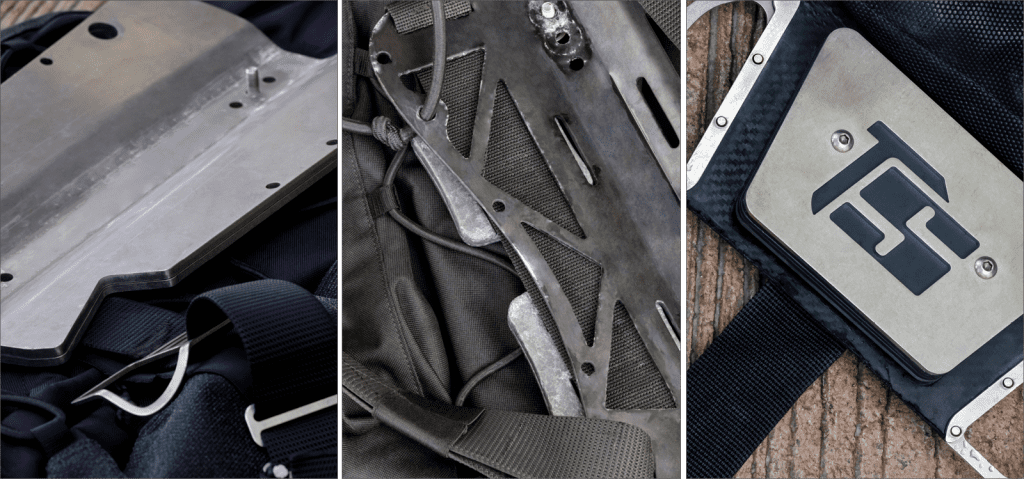
Harness
- The system’s shoulder straps are easily adjustable using a Velcro system that secures it in place with wide elastic wraps.
- The shoulder straps are connected by a removable bungee that keeps them in place when divers turn on their side. It also acts as a temporary clipping place for items such as pigtail marker clips, lights, etc.

BCD/Wing
- The inflator extends from behind, near the neck area, resembling the position in a backmount system. There is no valve, but instead, a direct, extremely durable, and resistant connector. This eliminates a fragile point present in all other systems.
- The wing’s bladder is easily accessible and can be changed even in the field.

Regulator accessories
- The system also utilizes custom-made clips for the regulator’s second stages. These clips allow divers to secure the regulators to their chest D-rings, resulting in a more streamlined profile and easy access in case of an emergency.
Commentary
The Toddy Style Sidemount System stands out as a top choice among cold water backmount divers looking to transition smoothly to sidemount diving. It offers a convenient alternative because of its compatibility with both existing regulators and hose lengths, as well as not requiring dedicated cylinders. The presence of a backplate, reminiscent of traditional backmount setups, provides a sense of familiarity and ease of adaptation. Whether for cold water diving or any other diving environment, the Toddy Style Sidemount System offers divers a reliable and comfortable sidemount configuration to enhance their underwater experiences.
xDEEP STEALTH 2.0 Tec
The STEALTH 2.0 TEC was designed for deep decompression diving and extended cave penetrations. It provides 42 kbs/19 kg of lift to support multiple cylinders required for advanced diving. It effectively manages gas movement and position to ensure stability, balance, and trim at any inflation level.


Weight System
- The Xdeep Stealth 2.0 features a customizable central weight system located on the spine. It can be adjusted to accommodate the maximum weight preferred by the diver.
- Additionally, there are droppable weight pockets available in different sizes: S-size (2 x 4.4 lbs/2 kg), M-size (2 x 6.6lbs/3 kg), and L-size (2 x 13.2 lbs/6 kg).
- For fine-tuning trim purposes, there are also trim pockets in M-size (2 x 4.4 lbs/2 kg) or L-size (2 x 6.6lbs/3 kg) that can be placed anywhere on the harness.

Harness
- The harness is one universal size with a wide adjustment range. It consists of independent shoulder, waist/hip, and crotch straps, each made of different thicknesses and fully adjustable with tri-gliders to fit various diver body types.
- The harness utilizes custom hardware, including two fixed large D-rings on the shoulders, two fixed D-rings on the waist/hip strap, and two rubber sliding waist D-rings (metal version available as an upgrade).
- It also has two rear drop square attachments for primary tank attachment, a crotch strap D-ring for accessories below the dump valve, and a DPV D-ring.
- The Y-configured harness attaches to the BCD/wing at the top.
BCD/Wing
- The BCD wing is designed to provide lift at the lower lumbar region. It is constructed with a Cordura 1100 dTEX outer shell fabric and a Nylon 440 dTEX inner bladder with a 0.2 mm TPU coating. It offers 42 lbs/19 kg of lift.
- The upper backside panel is abrasion-resistant for durability.
- The BCD includes an inflator available in three sizes, with a standard length of 16″/41 cm (14″/36 cm and 19″/48 cm available upon request).The inflator can be routed from the left (standard) or right side.
- One central low pull dump also functions as the system’s OPV.
- Bungees keep the wing attached to the waist harness, ensuring a snug fit around the diver’s body.
- The wing’s color combinations can be customized on Xdeep’s website: https://tuneup.xdeep.eu
Commentary
The XDEEP Stealth 2.0 is a well-designed and versatile diving system that caters to the needs of deep decompression diving and extended cave penetrations. Its robust weight system, adjustable harness, and efficient gas management make it a reliable choice for advanced divers. The BCD/wing combination offers ample lift and durability, while the customizable options allow divers to personalize their gear. Note that the modular system can also be configured from recreational sidemount. Overall, the XDEEP Stealth 2.0 combines functionality, comfort, and performance, making it a strong contender for serious diving adventurers.
Please Take a Minute And Complete our New: Sidemount Diving Survey. We will report the results in a coming issue.
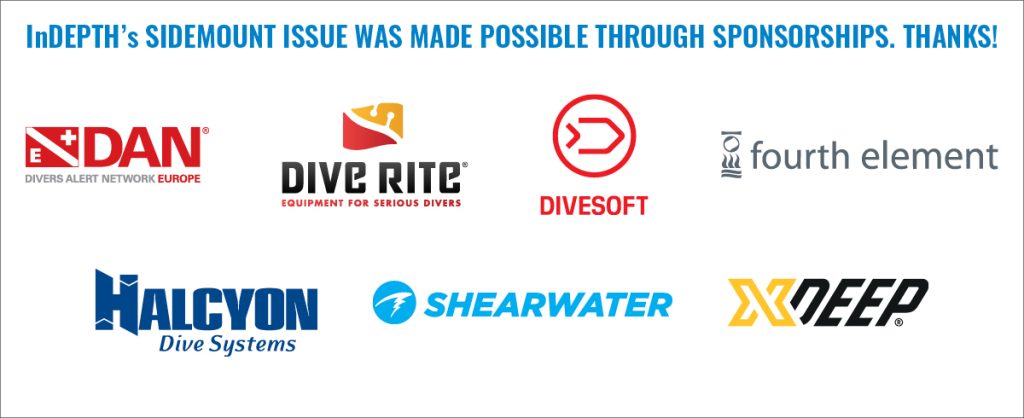
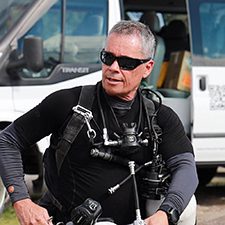
Steve Davis is the producer and host of the acclaimed podcast, “Speaking Sidemount,” author of the books, “The Canterbury Wreck – A Diver’s Guide” and the eBook, “Sidemount Fundamentals.” He is a specialist sidemount diver/instructor, dives exclusively in sidemount, and is the principal instructor and founder of Sidemount Pros. Steve travels the world diving sidemount in caves, wrecks, and open water. Through Speaking Sidemount Steve’s mission is to share his passion for sidemount diving and provide a medium for the world’s top sidemount divers, instructors, and explorers to share their experiences and thoughts on sidemount diving.
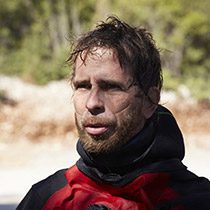
Stratis Kas, a Greek-Italian professional diving instructor, photographer, film director, and author, has spent over a decade as an esteemed Advanced Cave instructor, leading expeditions to extreme locations worldwide. His impressive diving achievements have solidified his expertise in the field. In 2020, Kas published the influential book “Close Calls,” followed by his highly acclaimed second book, “CAVE DIVING: Everything You Always Wanted to Know,” released in 2023. Accessible on stratiskas.com, this comprehensive guide has become a go-to resource for cave diving enthusiasts. Kas’s directorial ventures include the documentary “Amphitrite” (2017), shortlisted for the “Short to the Point” Film Festival, and “Infinite Liquid” (2019), which explores Greece’s uncharted cave diving destinations and was selected for presentation at Tekdive USA. Kas’s expertise has led to invitations as a speaker at prestigious conferences, including Eurotek UK, Tekdive Europe and USA, Tec Expo, and Euditek. For more information about his work and publications, visit stratiskas.com.

Michael Menduno/M2 is InDepth’s editor-in-chief and an award-winning journalist and technologist who has written about diving and diving technology for more than 30 years. He coined the term “technical diving.” His magazine “aquaCORPS: The Journal for Technical Diving” (1990-1996) helped usher tech diving into mainstream sports diving, and he produced the first tek.Conferences and Rebreather Forums 1.0 & 2.0. In addition to InDepth, Menduno serves as an editor/reporter for DAN Europe’s Alert Diver magazine, a contributing editor for X-Ray mag, and writes for DeeperBlue.com. He is on the board of the Historical Diving Society (USA), and a member of the Rebreather Training Council. Menduno is the organizer of Rebreather Forum 4.

